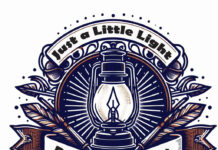The horse is a prey animal, relying on their senses to assess their environment.
Prey species are designed for scanning the environment compared to picking out sharp details. By scanning larger areas, prey is safer from a surprise attack by a predator.
Horses use vision to orientate themselves, detect motion and distance, and evaluate the consistency of the environment, according to equine specialists at Iowa State University.
The equine eye is eight times larger than human eyes placed on the sides of their head. Position of the eyes on the horse’s face accounts for differences in how horses see, dictate visual range, peripheral motion detection, and depth perception.
A horses’ ability to see depth is limited because their eyes are set so far apart. From most angles, horses cannot get a left-eye and right-eye view of the same object in one glance.
Unlike humans, the horse can see images to the left and right at the same time due to the eyes being at the side of the head.
The cornea is the surface of the clear part of the eye and the colored part of the eye is the iris.
Eyelids are a thin ring of two layers of muscles that relax and contract to open and close the eye. The third eyelid is a pink membrane that moves over the eye from the inside corner to the outside corner.
In combination with the upper and lower eyelid, all three function to protect the eye. Eyelids have tear glands that keep the eye moist. A duct drains the tears to a small opening just inside the nostril.
An unusual feature of the equine eye is a knobby structure that juts out from the top of the iris and functions to shade the pupil from glare.
The horse’s night vision is superior to humans which enhances visual sensitivity under low light conditions. When light enters the eye, it triggers a photoreceptor on the retina to trigger additional receptors.
As a result, the horse can see at lower light levels, but the reflections also blur images by reducing the resolution. Because light is magnified, the pupil must constrict more during sunlight to protect the eye.
This may cause the horse difficulty in identifying details and smaller objects and moving ones may trigger the flight response.
Horses’ eyes are not adept at making a quick transition between bright and dark locations. This explains why horses are sometimes reluctant to enter dark places, such as an unfamiliar building, stall, or trailer.
The blind area is directly behind the animal’s head and body and has an arc of approximately 20 degrees. The front blind spot is directly under the head, immediately in front of the forehead and below the body in front of the horse’s face.
A horse cannot see what they eat such as grass they graze or grain in the bucket, the fingers that stroke their muzzle, or even the bit they accept in their mouths. If a person raises a hand suddenly, they appear to the horse to come out of nowhere.
Standing directly behind a horse, the animal cannot see you, thus when surprised from behind, a horse may kick you. For safety reasons, it is always best to make sure the horse knows you are there.
All the horse must do is change its head position and they can increase their visual horizons. If a horse lowers its head and moves it slightly from side to side, a horse can easily scan a 360-degree horizontal periphery.
To focus on distant objects, a horse raises its head. When the horse’s head is held perpendicular to the ground, a horse’s visual field is lowered, focusing less on distant objects and more on the immediate ground in front of the horse.
Horses can detect the appearance of objects within an almost fully encompassing circle and are able to identify objects within most but not all their panoramic field of view.
The horse may startle when an object passes from the field of vision from one eye to the other eye. For example, you take your dog on a trail ride.
The dog falls behind and jogs to catch up. The horse recognizes the dog on the left but when the dog moves over to the right side the horse jumps unexpectantly.
Horses are less able to distinguish details and contrast colors. They can see longer distances and can view the horizon and ground at the same time.
Horses are easily blinded by bright light but can see better in dim light, and they recognize patterns or outlines.
+++30+++





